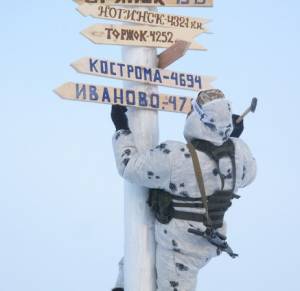
Paratrooper from the 98th Airborne Division (Ivanovo). Photo: Ивановская газета
I have not been able to give due attention to this blog during spring (blame Ukraine) but now I want to upgrade it to a proper PRIO blog, with the link to Facebook, certainly.
What has caught my attention recently was Putin-chaired roundtable on the safety of Arctic development in St. Petersburg on June 5. The tone – the theme of full transparency and eco-stability was in the focus – was certainly very different from the “hard security” focus of the Security Council session in mid-April.
However, even in the environment-centered debates, the issue of increasing the military presence is emphasized, like for instance, in this article in Nezavisimaya, which argues for more bases and refers the “second strike” doctrine.
Sweet-talking about cooperation, Russia goes ahead with the military build-up, and the CEO of “Vysokotochnye kompleksy” enterprise reveals in this interview that the Pantsyr-C1 (SA-22 Greyhound) air-defense system (combines guns and missiles) is tested for the deployment in the Arctic. It is rather ironic that semi-official media complains that Norway goes too slow with re-starting military cooperation with Russia. The paratrooper from the 98th Airborne Division (Ivanovo) in this picture seems not too worried about the views of Arctic neighbours.



